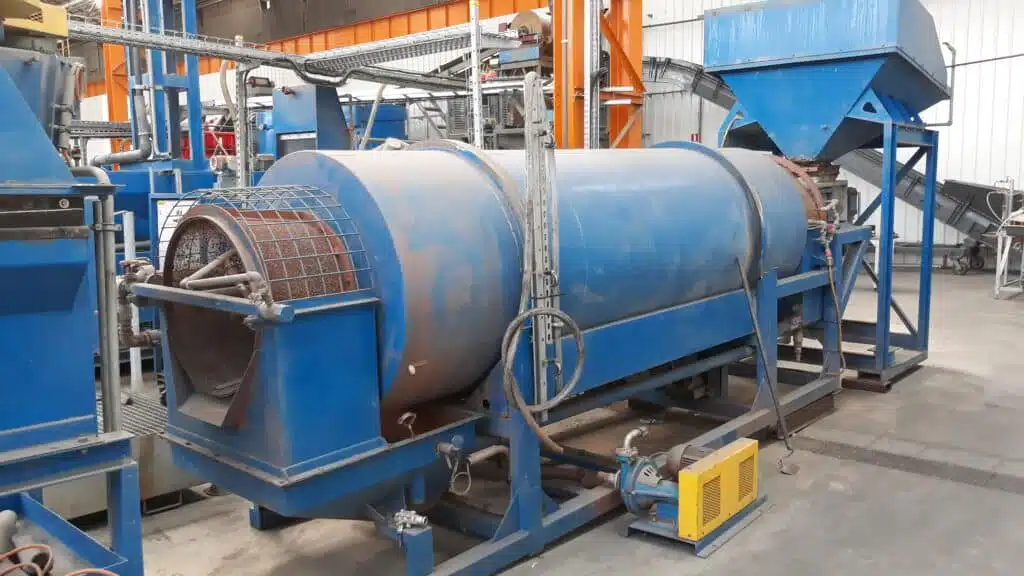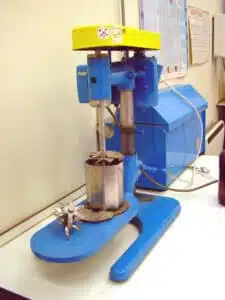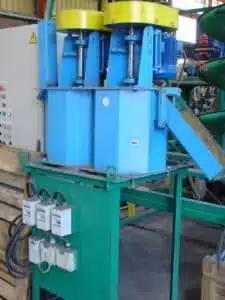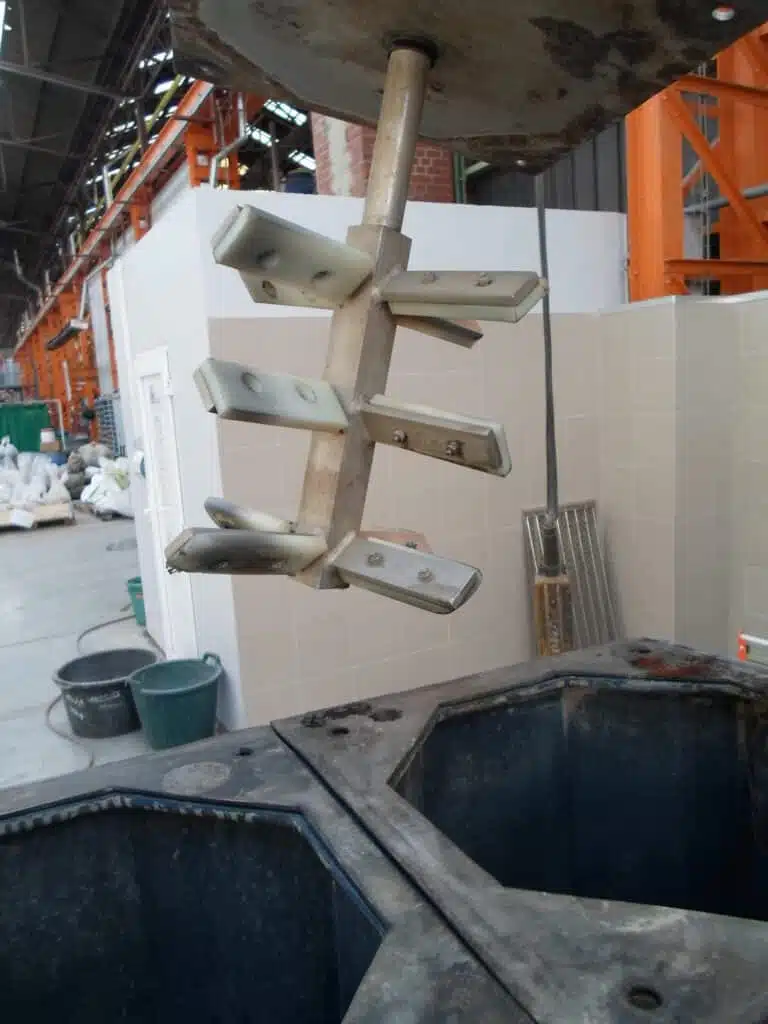Contact us
Attrition & Scrubbing
Scrubbing aims at placing in suspension the ensemble of solids in the material to be processed, often clayey or relatively unconsolidated, through actions involving the dispersion of constituents by means of deconsolidation and disintegration. It also brings about a more or less extensive surface cleaning of the elements, or the placing in solution or suspension of the salts and compounds potentially present.
The pieces of equipment employed are rotary scrubbers composed of a cylindrical body turning around a horizontal axis and fitted with sorters. They generally include an outflow trommel which enables the coarse-grained substances to be separated directly from the fines.
Attrition aims at cleaning very completely the surface of particles in cases where the particles are covered in harmful foreign components: encrustations of oxides, films of oil, surface roughness trapping very fine carbonaceous or metallic particles, the presence of very flaky foreign constituents, etc. This operation is carried out by rubbing particles against each other in attrition cells.
These cells are constituted of a tank with a rotor carrying opposing propellors, whose rotation creates between them very intense whirling cells within which the particles to be processed clash and rub against each other.
The material to be processed is in pulp form for 65% to 75% of the solids in order to favour to the maximum particle-to-particle contact. Attrition can only be carried out on a particle size range spanning from 50…100 µm to 6…7 mm.
| Type | Number | Speed | Particle size In (d100) | Capacity | |
|---|---|---|---|---|---|
| Scrubbing | |||||
| Proceptis DSF |
 |
800/1.500 mm | 30 mm | 60 mm | 0.35 to 1 T/h |
| Improve | 1.200/3.700 mm | 4 mm | 80 mm | 1.2 T/h | |
| Attrition | |||||
| Wemco (labo) |
 |
1 | 1.010 rpm | 100 µm to 7 mm | 1.5 litres |
| Wemco (pilote) |
 |
2 | 445 rpm | 100 µm to 7 mm | 2 x 30 litres |
| Denver Sala 16x16 | 2 | 575 rpm | 100 µm to 7 mm | 2 x 85 litres | |

Our expertise
In mineral processing
All
Our expertises